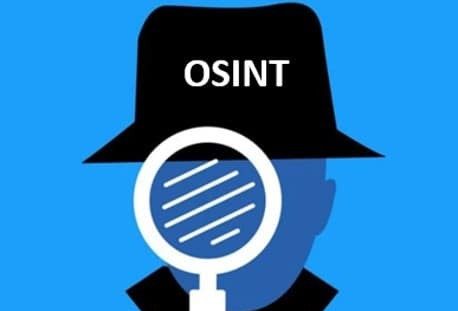Open-source intelligence (OSINT) is the act of gathering and analyzing publicly available data for intelligence purposes.

What is open-source data?
Open source data is any information that is readily available to the public or can be made available by request. OSINT sources can include:
- Newspaper and magazine articles, as well as media reports
- Academic papers and published research
- Books and other reference materials
- Social media activity
- Census data
- Telephone directories
- Court filings
- Arrest records
- Public trading data
- Public surveys
- Location context data
- Breach or compromise disclosure information
- Publicly shared cyberattack indicators like IP addresses, domain,s or file hashes
- Certificate or Domain registration data
- Application or system vulnerability data
Open-source intelligence (OSINT) is the collection and analysis of data gathered from open sources (covert sources and publicly available information [PAI]) to produce actionable intelligence. which refers to legally gathered information about an individual or organization from free, public sources. In practice, that tends to mean information found on the internet. Still, any public information falls into the category of OSINT, whether it’s books or reports in a public library, articles in a newspaper, or statements in a press release. OSINT is primarily used in national security, law enforcement, and business intelligence functions and is of value to analysts who use non-sensitive intelligence in answering classified, unclassified, or proprietary intelligence requirements across the previous intelligence disciplines. The first step in a targeted attack – or a penetration test or red team activity – is gathering intelligence on the target. While there are ways and means to do this covertly, intelligence gathering usually s tarts with scraping information from public sources, collectively known as open-source intelligence or OSINT. Thanks to social media and the prevalence of online activities, there is such a wealth of legally collectible OSINT available now that this may be required to give an attacker everything they need to profile an organization or individual successfully.
OSINT Techniques

Perhaps the biggest challenge associated with OSINT is managing the truly staggering amount of public data, the likes of which grow daily. Because humans cannot possibly manage so much information, organizations must automate data collection and analysis and leverage mapping tools to help visualize and connect data points more clearly. With the help of machine learning and artificial intelligence, an OSINT tool can assist OSINT practitioners in gathering and storing large quantities of data. These tools can also find significant links and patterns among different pieces of information. Further, organizations must develop a clear underlying strategy to define which data sources they want to gather. This will help avoid overwhelming the system with information of limited value or questionable reliability. To that end, organizations must clearly define their goals and objectives as it pertains to open source intelligence.
OSINT Collection Techniques
The collection of open-source intelligence falls into two categories:
- Passive collection
- Active collection.
Passive Collection:
The passive collection combines all available data into one, easily accessible location. With the help of machine learning (ML) and artificial intelligence (AI), threat intelligence platforms can assist in managing and prioritizing this data, as well as dismissing some data points based on rules defined by the organization.
Active Collection:
The active collection uses a variety of investigative techniques to identify specific information. Active data collection can be used ad-hoc to supplement cyber threat profiles identified by the passive data tools or to otherwise support a specific investigation. Commonly known OSINT collection tools include domain or certificate registration lookups to identify the owner of certain domains. Public malware sandboxing to scan applications is another example of OSINT collection.
OSINT also includes information that can be found in different media types. Though we typically consider it text-based, information in images, videos, webinars, public speeches, and conferences all fall under the term.
OSINT is different from other forms of intelligence gathering in several ways, including the following:
- OSINT is focused on publicly available and legally obtainable information, whereas other forms of intelligence gathering may involve confidential or classified sources.
- OSINT uses various sources, including social media, news articles, public records, and government reports. In contrast, other forms of intelligence gathering may focus on a specific source type.
- OSINT often involves using advanced analytical techniques, such as natural language processing and machine learning, to extract insights and intelligence from large volumes of data. In contrast, other forms of intelligence gathering may rely more on human analysis and interpretation.
These threats include:
- Hacking
- Information leaks
- Extremist activity
- Geopolitical threats · Fraud
- Violent attacks
- Disinformation campaigns
- OSINT tools can be invaluable for handling internal processes such as:
- Brand protection
- Workplace and facilities safety issues
- Real-time event monitoring
- Executive protection and force protection
- Natural Disasters and incident response
Cyber threats
- Data breaches targeting corporate and customer information
- Phishing, business email compromise (BEC), and other forms of impersonation
- Malware and ransomware attacks
- Credential stuffing
- SIM swapping ·
- Distributed denial of services (DDoS) attacks
- Zero-day exploits
Cyber-enabled threats
- Credit card fraud
- Money laundering
- Counterfeiting
- Theft and gift card fraud
- Workplace harassment
- Insider threats
Physical security threats
- VIP-targeted doxing and harassment
- Travel risk management
- Event monitoring
- Crises like terrorism and natural disasters
OSINT tools support enterprise security teams in identifying and responding to these risks. Social media networks provide real-time updates from on-the-ground threats near executives and other physical assets like offices, employees, and corporate events. Paste sites, forums, and marketplaces across the deep and dark web often publish the earliest indicators of data breaches and executive-targeted doing. Anonymized discussions on these covert sites help security teams identify fraud, insider threats, and cyber-attack strategies directly from the source. Combined with other risk management feeds and tools, platforms provide security teams with more context and earlier risk indicators so they can respond faster and avoid blind spots. But many organizations face challenges in responding to risk quickly and effectively, especially as more enterprise teams—from marketing to IT and compliance—require
OSINT. According to a 2021 report by Forrester Research, 42% of corporate decision-makers are currently improvising when it comes to risk management. Almost 70% claim that risk information is siloed across their departments and only 29% are confident in their risk management technologies.
Reference :
What is OSINT Open Source Intelligence? – CrowdStrike What is OSINT (Open-Source Intelligence?) | SANS Institute What is Open Source Intelligence (OSINT)? | Micro Focus What is Open Source Intelligence (OSINT)? | SentinelOne Open-Source Intelligence (OSINT) | Techniques & Tools | Imperva For further clarifications or support, please write to contact@paradigmitcyber.com
 Perhaps the biggest challenge associated with OSINT is managing the truly staggering amount of public data, the likes of which grow daily. Because humans cannot possibly manage so much information, organizations must automate data collection and analysis and leverage mapping tools to help visualize and connect data points more clearly. With the help of machine learning and artificial intelligence, an OSINT tool can assist OSINT practitioners in gathering and storing large quantities of data. These tools can also find significant links and patterns among different pieces of information. Further, organizations must develop a clear underlying strategy to define which data sources they want to gather. This will help avoid overwhelming the system with information of limited value or questionable reliability. To that end, organizations must clearly define their goals and objectives as it pertains to open source intelligence.
Perhaps the biggest challenge associated with OSINT is managing the truly staggering amount of public data, the likes of which grow daily. Because humans cannot possibly manage so much information, organizations must automate data collection and analysis and leverage mapping tools to help visualize and connect data points more clearly. With the help of machine learning and artificial intelligence, an OSINT tool can assist OSINT practitioners in gathering and storing large quantities of data. These tools can also find significant links and patterns among different pieces of information. Further, organizations must develop a clear underlying strategy to define which data sources they want to gather. This will help avoid overwhelming the system with information of limited value or questionable reliability. To that end, organizations must clearly define their goals and objectives as it pertains to open source intelligence.


